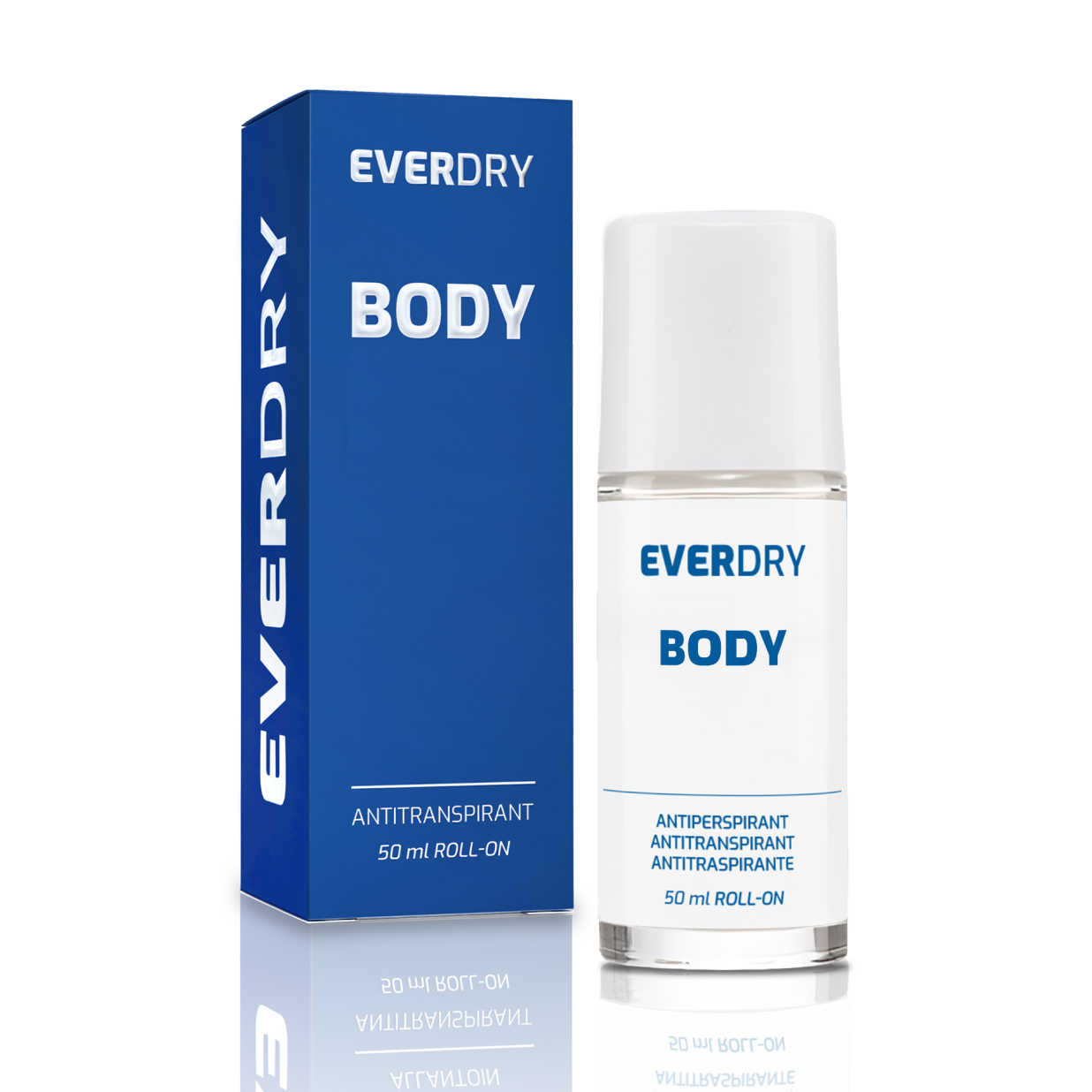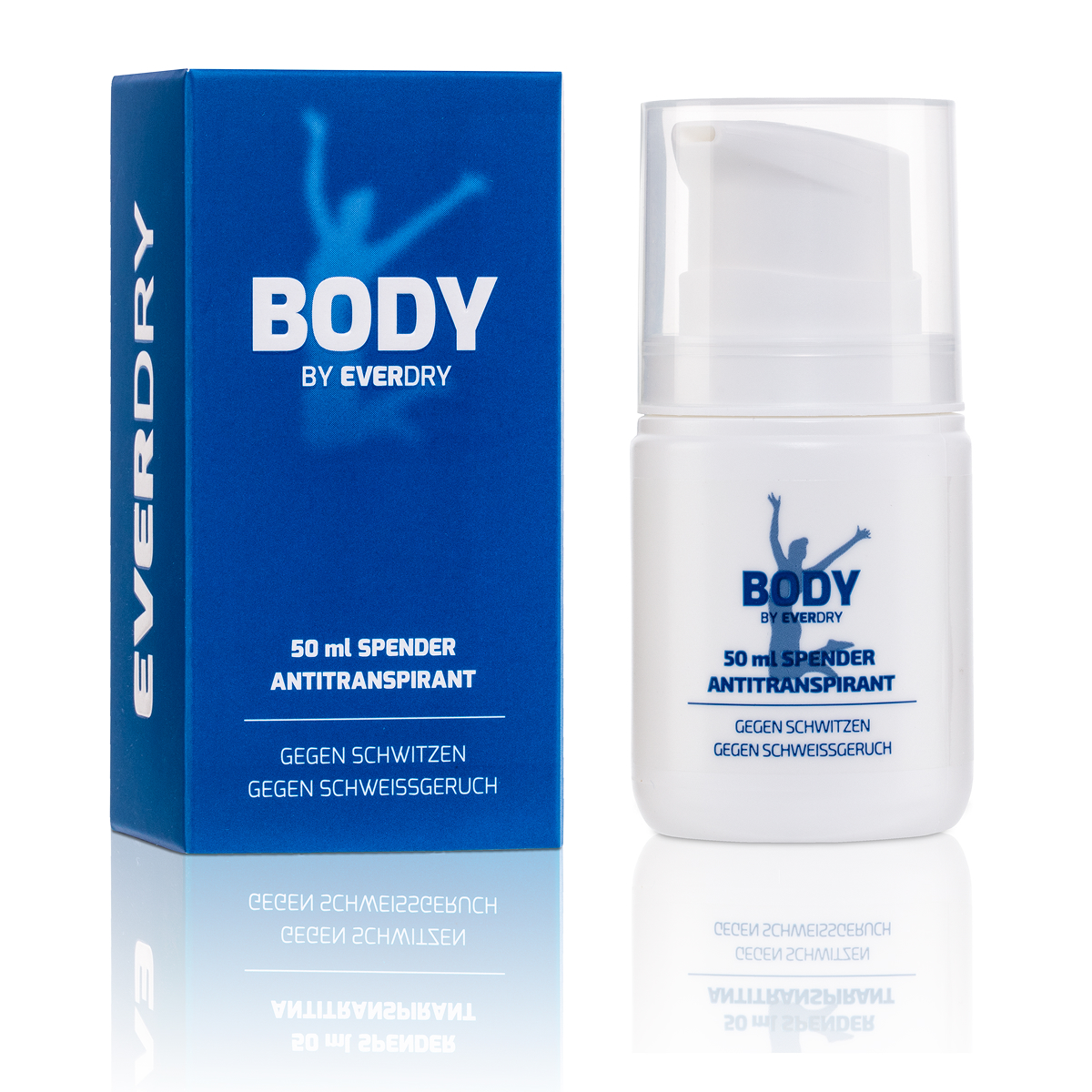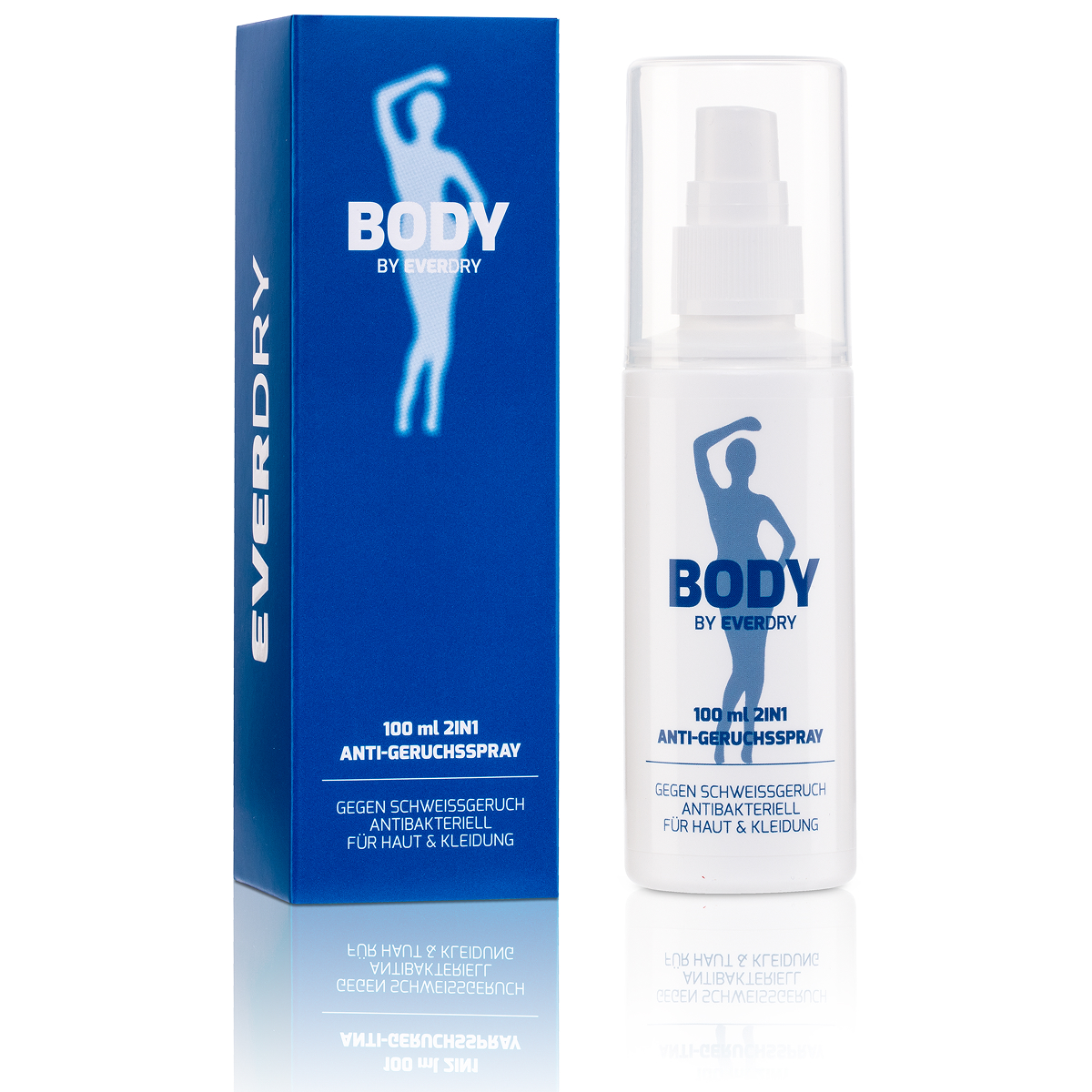In a nutshell: Key takeaways
Hyperhidrosis, the medical term for excessive sweating
Sufferers sweat more than is needed to keep their body temperature normal. This can cause significant bother in daily life, as damp clothes, stains, and unpleasant odours can knock your confidence. The causes of hyperhidrosis are varied, ranging from hormonal changes to certain medical conditions.
Hyperhidrosis - When Sweating Becomes a Medical Condition
Sweating is usually a vital bodily function, helping to cool us down and prevent overheating. You could think of our skin like an air conditioning system, with perspiration acting as the coolant.
So, if someone's working hard physically or exposed to intense heat, they'll naturally sweat a lot, and this doesn't necessarily mean they have hyperhidrosis. It's simply the body's way of cooling down.
Hyperhidrosis (Greek: hyper = over, too much / hidros = sweat) isn't just about sweating a lot; it usually indicates a malfunction of the sweat glands. If an unusually large amount of sweat is produced even when there's no need to cool the body down (to prevent overheating), then hyperhidrosis might be the cause. This could be the case if, for example, you start sweating heavily at a normal room temperature while wearing light clothing and without any physical exertion – so much so that you get sweat patches under your arms, beads of sweat rolling down your forehead, or clammy hands.
Dermatologists Recognise Two Main Types of Hyperhidrosis
Primary Hyperhidrosis
Excessive sweating that isn't triggered by other external factors. In these cases, doctors need to treat the malfunctioning sweat glands directly.
Secondary Hyperhidrosis
Excessive sweating that is caused by other external factors, such as illnesses or medications. Here, doctors focus on addressing the underlying causes, like treating the illness or changing/adjusting medications.
Grade I - Mild Form
- Your skin is noticeably damp on your hands, feet, and underarms.
- The sweat patches under your arms reach a diameter of 5-10 cm.
Grade II - Moderately Severe Form
- Sweat droplets form on your damp skin.
- The sweat patches under your arms reach a diameter of 10-20 cm.
- Sweating on your feet and hands is limited to the soles and palms.
Grade III - Severe Form
- Sweat is dripping from your skin.
- The sweat patches under your arms have a diameter of over 20 cm.
- You also sweat on the backs of your hands and feet, as well as the sides of your hands and feet.
Objective Tests Help to Precisely Determine the Severity
There are 2 key tests used to diagnose hyperhidrosis:
Qualitative Test: Determining IF a Person Secretes Excessive Sweat
Using the iodine-starch test, the doctor identifies the area of skin that's producing excessive sweat. They apply an iodine solution to the dry skin and then sprinkle starch powder over it. The starch, iodine, and sweat react chemically, turning the sweaty area a blue-black colour. However, this test doesn't tell us how much sweat the glands are producing.
Quantitative Test: Determining HOW MUCH Sweat a Person Secretes
With the help of the gravimetric method, the dermatologist measures the actual amount of sweat secreted in a specific area of skin. They'll need filter paper, a stopwatch, and a scale. The filter paper absorbs the moisture you've sweated within a specific time frame. Afterwards, the filter paper is weighed. If you typically produce more than 100 mg of sweat per armpit in 5 minutes, you likely have hyperhidrosis.
Which Areas of the Body Are Often Affected by Hyperhidrosis?
Underarms, Forehead, Hands, and Feet Sweat the Most
There's a particularly high concentration of sweat glands on the forehead, in the armpits, on the palms of the hands, and the soles of the feet. In total, a person has around three million sweat glands (sweat pores), which are distributed almost all over the body.
Hyperhidrosis can also be further defined by its location. That is, in which areas of the body does the affected person sweat excessively? If sweating always occurs only in specific areas (armpits, forehead, etc.), it's referred to as focal hyperhidrosis. However, if excessive sweating occurs all over the body, it's called generalised hyperhidrosis. This form is often linked to secondary hyperhidrosis.
The process of "sweating" is initiated by nerve cells. We can't consciously control these nerves; instead, they're regulated by the neurotransmitter acetylcholine.
A bit of a nuisance, really! Because if we could just tell those nerve cells to chill out on the sweating, around 2.5 million people in Germany wouldn't have to deal with excessive sweating even on perfectly normal days.
With pathological sweating, the body produces an uncontrollable amount of sweat regardless of whether it's hot or cold. So, people who suffer from hyperhidrosis don't necessarily have more sweat glands than those with normal sweating, it's just that their sweat glands are stimulated more frequently and activated to produce more sweat.
Hyperhidrosis - Am I Still Sweating Normally? Recognising the Symptoms
It's relatively straightforward to determine if you're suffering from hyperhidrosis (excessive sweating) without an obvious cause. Just ask yourself the following questions:
- Did my symptoms start around puberty and have they continued to this day?
- Do I sweat in almost every situation? Whether it's hot or cold, and even without doing anything physically strenuous?
- Do my sweating episodes usually come on completely unexpectedly?
- Am I so soaked with sweat at least once a week that I have to change my clothes? Excluding any sports activities.
- Do I always sweat in the same areas of my body? And is it roughly the same amount on both sides?
- Does "hyperhidrosis" run in my family? Are other family members also affected?
- Do I find this type of sweating a burden, and does it significantly restrict my life?
If you can answer all or most of these questions with a clear YES, you should definitely make an appointment with your doctor. They'll certainly be able to help you. Your symptoms will then be examined more closely and classified according to their severity.
What Treatment Options Are There for Hyperhidrosis?
Together with your doctor, the first step for secondary hyperhidrosis is naturally to get to the bottom of the trigger and treat the underlying cause. Often, with appropriate therapy, the illness can be cured, and the side effect of "heavy sweating" usually disappears as well.
However, sometimes this isn't enough or it takes a long time. To help those affected more quickly, there are several treatment options that are also used for primary hyperhidrosis to put a stop to excessive sweating:
1. Antiperspirants
Using an antiperspirant helps to normalise sweat gland function, significantly reducing the amount of sweat produced. Sweating behaviour calms down, and you can leave excessive sweating behind. This type of sweat inhibitor is applied externally only.
2. Iontophoresis
Iontophoresis is a medical procedure where affected body parts are exposed to weak electrical impulses using water baths or damp electrodes. This form of treatment soothes the nerves, which leads to reduced sweat production.
3. Medications
There are some prescription medications available to treat excessive sweating as a symptom. However, these so-called antihidrotics often have limited success and usually come with various side effects. You should definitely discuss this form of symptomatic drug therapy thoroughly with your doctor.
4. Botulinum Toxin
This temporary solution (lasting up to 7 months) can help with severe cases of hyperhidrosis. The affected area is treated with a Botox injection, which blocks sweat production. However, this kind of treatment isn't entirely painless.
5. Surgical Therapy
In particularly severe cases, surgical intervention is a last resort. This type of surgery involves cutting out or scraping away the sweat glands. However, such a procedure should really only be considered as a final option. Again, it's crucial to discuss this thoroughly with your specialist, as this form of treatment always carries risks.
Finding the Cause: Is It Really Primary Hyperhidrosis?
Illness as the Culprit
If you're sweating excessively, you should first get it checked out by a doctor to see if there's an underlying medical condition. This could be an infection, high blood sugar, a thyroid problem, or a neurological disorder.
In this case, it's secondary hyperhidrosis.
Exertion and Heat as Sweat Triggers
30 degrees Celsius in the shade, the sun's blazing. Nobody expects you not to sweat in that kind of heat.
While us "northerners" react to heat with a lot of sweat, people from southern regions usually sweat less. Their bodies have "acclimatised" and respond more calmly to temperatures that we find strenuous. It's similar with well-trained athletes. While someone unfit might get out of breath and sweaty just climbing stairs, an athlete will handle this exertion with ease and without a single bead of sweat. Only during intense training will a top athlete sweat more quickly than someone untrained. Their body has learned to protect them from overheating early on.
In this case, it is NOT primary hyperhidrosis.
Emotional Sweating: Warning, Emergency!
Most people have probably experienced clammy hands in exam situations or due to sheer excitement. This emotional sweating occurs in a wide variety of situations: when we're anxious or nervous, when we're in pain, or when we're angry. With emotional sweating, the body reacts to a stressful or emergency situation. In the Stone Age, this was vital for survival, as people had to decide whether to fight bravely or if it was wiser to flee. We don't have to do that anymore, but the primal "fight-or-flight" response with a rapid heartbeat, increased blood pressure, tense muscles, and a higher body temperature has remained with us.
Emotional sweating is significantly different from sweating due to heat or exercise. While the eccrine sweat glands are responsible for temperature-regulating sweating, the apocrine sweat glands (also known as scent glands) go into overdrive during stressful situations. They are stimulated by the release of adrenaline to produce so-called stress sweat. But this sweating is different and makes us feel uneasy. Armpits, hands, and soles of the feet become wet, the sweat is oilier and smells strong, the forehead shines, hair gets damp, and your hairstyle is ruined. With so many negative impressions, a vicious cycle begins that intensifies the sweating. You feel embarrassed, become insecure and even more nervous, get worked up internally, and consequently sweat even more.
In this case, it is NOT primary hyperhidrosis.
When Hormones Go Haywire, Sweat Production Goes Crazy
There are phases in life when many things don't seem to be the way they once were. During puberty, pregnancy, breastfeeding, and menopause, not only can feelings be strongly stirred up, but also sweating behaviour. Hormonal changes are responsible for making you sweat more easily, and the sweat might smell different than usual. Usually, this unusual sweating returns to normal once the hormone levels have stabilised.
In this case, it is NOT primary hyperhidrosis.
Being Overweight and Having an Unhealthy Lifestyle Promote Sweating
Anything that negatively affects the autonomic nervous system, metabolism, and hormonal balance will make us sweat more easily. This includes being overweight. Due to weight gain, a person not only becomes heavier and more sluggish, but they also sweat more quickly even with slight physical exertion and in warmer temperatures than someone of normal weight. To move the high body weight, the body needs more energy, the circulation is weakened, and sweating is promoted.
Alcohol consumption increases sweat secretion, although the idea that you can "sweat out" alcohol is a myth. Besides alcohol, nicotine and coffee also promote sweating because they negatively affect blood vessels and sweat glands.
The saying "use it or lose it" might apply to healthy exercise, but definitely not to stress. Quickly trying to get things done between appointments, being constantly available at work, then picking up the kids from school, not being able to switch off in the evening – anyone who's constantly running on high gear will eventually start to sweat. Sudden sweating episodes during the day and also at night can be the result of excessive psychological stress, being overwhelmed, and an imbalanced work-life balance.
In this case, it is NOT primary hyperhidrosis.
Spicy Food Makes Everyone Sweat
We all know this: spicy food really fires up our body to produce more sweat. While your tongue burns, the first beads of sweat form on your forehead, and sometimes they even turn into little trickles. Spicy foods are perceived as hot by the receptors on the tongue, which is why we also feel a burning sensation. Even heavy meals and alcohol can make us sweat. The body wants to compensate for the heat, burn the energy consumed, the metabolism is stimulated, and so is heat production. This is followed by a clear message to the sweat glands: cooling down, please!
In this case, it is NOT primary hyperhidrosis.
In most cases, excessive sweating returns to a normal level once the underlying causes have been addressed.
Whether heavy sweating is caused by heat, exercise, illness, or other factors, in all situations we need to refuel: both the lost fluids and the "sweated-out" minerals and salts must be adequately replenished in the body.
It's a common misconception that drinking less will also reduce sweating. Moreover, fluid loss can lead to life-threatening situations!
Still mineral water, a refreshing apple spritzer, or salted yoghurt diluted with water (e.g., Ayran) are particularly good drinks. The drinks shouldn't be ice-cold, as this can also make us sweat more. The body tries to bring the cold liquid up to temperature, which requires energy and gets the sweat flowing.
First published: 12.05.2011
Updated: 27.05.2025

Content: 0.05 Liter (€398.00 / 1 Liter)

Content: 0.05 Liter (€398.00 / 1 Liter)



